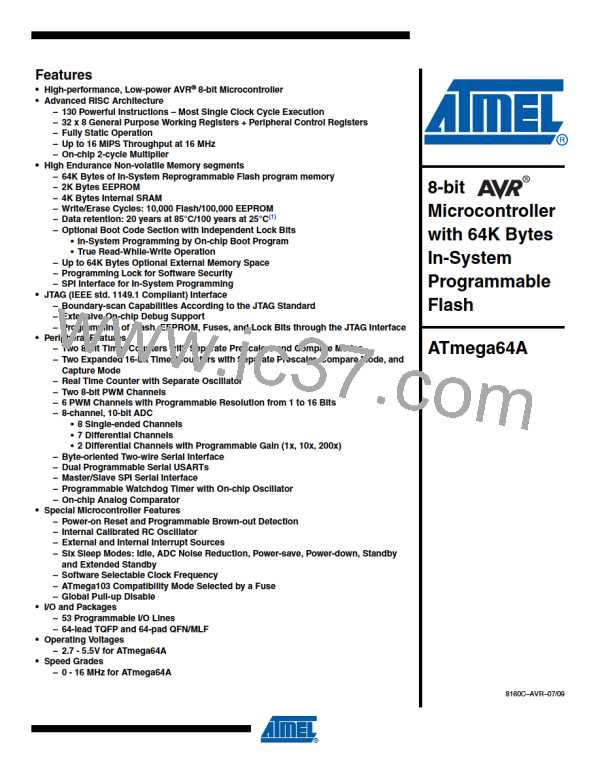ATmega64A
Transmitter or the Receiver depending on the usage. For interrupt driven USART operation, the
Global Interrupt Flag should be cleared (and interrupts globally disabled) when doing the
initialization.
Before doing a re-initialization with changed baud rate or frame format, be sure that there are no
ongoing transmissions during the period the registers are changed. The TXCn flag can be used
to check that the Transmitter has completed all transfers, and the RXCn flag can be used to
check that there are no unread data in the receive buffer. Note that the TXCn flag must be
cleared before each transmission (before UDRn is written) if it is used for this purpose.
The following simple USART initialization code examples show one assembly and one C func-
tion that are equal in functionality. The examples assume asynchronous operation using polling
(no interrupts enabled) and a fixed frame format. The baud rate is given as a function parameter.
For the assembly code, the baud rate parameter is assumed to be stored in the r17:r16
registers.
Assembly Code Example(1)
USART_Init:
; Set baud rate
out
out
UBRRnH, r17
UBRRnL, r16
; Enable receiver and transmitter
ldi
out
r16, (1<<RXENn)|(1<<TXENn)
UCSRnB,r16
; Set frame format: 8data, 2stop bit
ldi
out
ret
r16, (1<<USBSn)|(3<<UCSZn0)
UCSRnC,r16
C Code Example(1)
#define FOSC 1843200// Clock Speed
#define BAUD 9600
#define MYUBRR FOSC/16/BAUD-1
void main( void )
{
:.
USART_Init ( MYUBRR );
:.
}
void USART_Init( unsigned int ubrr )
{
/* Set baud rate */
UBRRnH = (unsigned char)(ubrr>>8);
UBRRnL = (unsigned char)ubrr;
/* Enable receiver and transmitter */
UCSRnB = (1<<RXENn)|(1<<TXENn);
/* Set frame format: 8data, 2stop bit */
UCSRnC = (1<<USBSn)|(3<<UCSZn0);
}
Note:
1. See “About Code Examples” on page 8.
180
8160C–AVR–07/09

 ATMEL [ ATMEL ]
ATMEL [ ATMEL ]